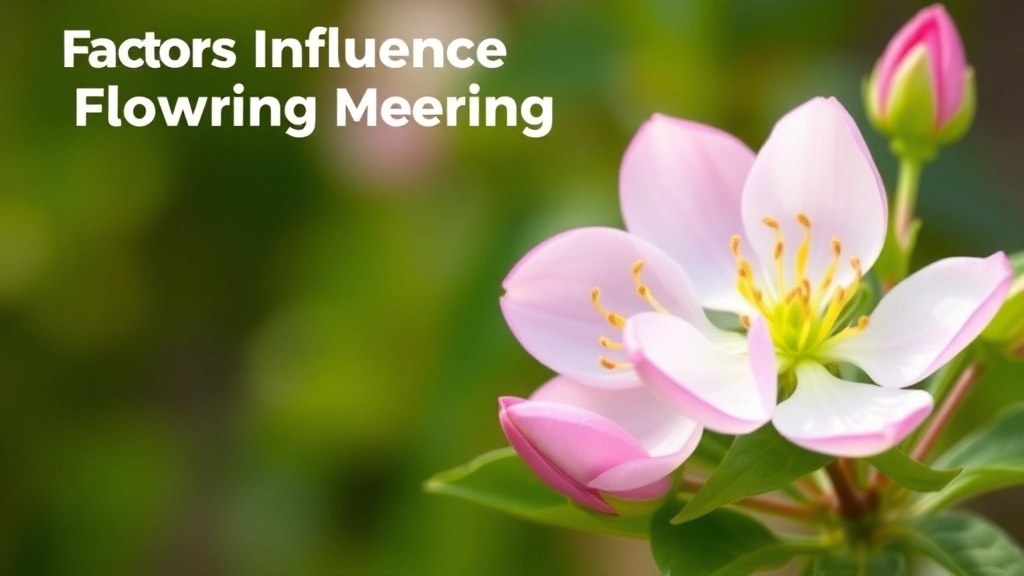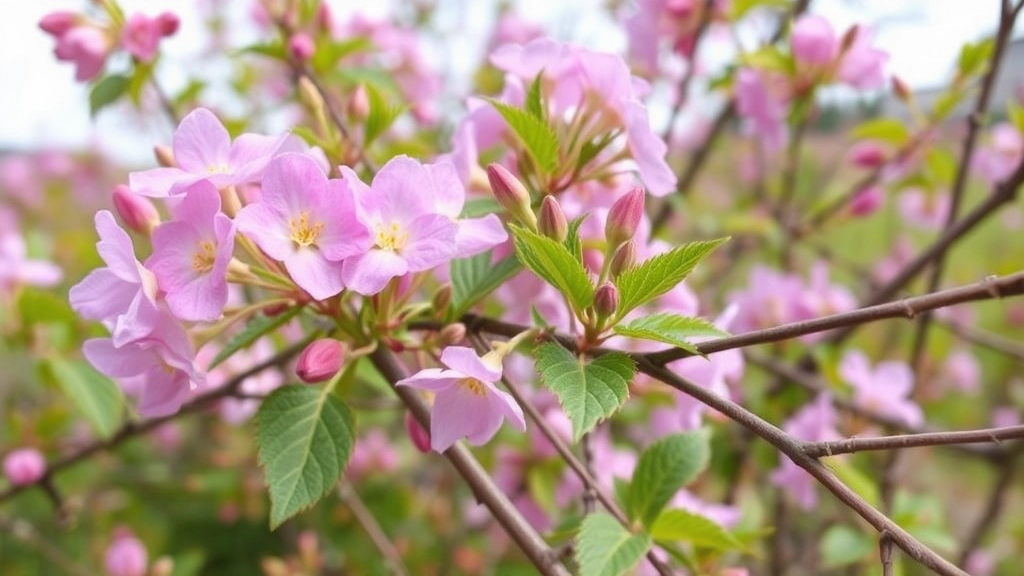Welcome, plant enthusiasts!
As an avid Kalanchoe grower, I’m thrilled to share my insights on the fascinating flowering period of Kalanchoe blossfeldiana. This vibrant succulent has captivated gardeners worldwide with its stunning blooms and easy-care nature. In this article, we’ll explore the secrets to extending its flowering season and keeping those colorful blossoms coming year-round.
From optimal light conditions and watering schedules to soil preferences and pruning techniques, we’ll cover everything you need to know to become a Kalanchoe blossfeldiana blooming expert. Whether you’re a seasoned gardener or a curious beginner, get ready to unlock the full potential of this remarkable plant and enjoy a continuous display of beautiful flowers in your home or garden.
Optimal Blooming Seasons for Kalanchoe Blossfeldiana
Let’s talk Kalanchoe Blossfeldiana – the plant that’s like your reliable friend who always shows up to the party.
When does this beauty strut its stuff? Well, buckle up.
Kalanchoe’s prime time is typically winter to spring.
But here’s the kicker – with the right care, these bad boys can bloom almost year-round.
You heard that right. Year-round blooms. Sounds too good to be true, right?
Here’s the deal:
- In their natural habitat, they bloom in winter and spring
- But in our homes? We can hack the system
How? By manipulating light exposure. More on that later.
The key is understanding their natural cycle and then tweaking it.
Think of it like hacking your sleep schedule – it’s possible, but you gotta know the rules to break ’em.
So, optimal blooming seasons? Winter to spring naturally, but potentially any time with the right tricks up your sleeve.
Remember, Kalanchoe Blossfeldiana is a succulent that doesn’t always play by the rules.
And that’s what makes it so damn interesting to grow. With proper care, you can enjoy a flowering Kalanchoe Blossfeldiana throughout the year.
Factors Influencing Flowering Period

Let’s chat about what makes Kalanchoe blossfeldiana bloom like crazy. You know, I used to think these plants were just finicky, but turns out, they’re pretty straightforward once you get the hang of it.
Light’s the big boss here
Seriously, these guys are light junkies. They need about 14 hours of darkness daily for about six weeks to kick off flowering. It’s like they’re teenagers who need their beauty sleep to look good.
Temperature’s got a say too
- Cool nights (around 15°C) and warm days (20-25°C) are their sweet spot
- Too hot? They’ll sulk and refuse to bloom
- Too cold? Same deal, no flowers for you
Water wisely
Overwatering’s a real mood killer for these plants. They’re like that friend who cancels plans if it’s raining. Keep ’em on the drier side, and they’ll reward you with blooms.
Soil matters more than you’d think
- Well-draining soil = happy Kalanchoe
- Soggy soil = sad, flowerless plant
Nutrients play a role
Feed ’em right, and they’ll put on a show. But go easy â too much fertiliser and you’ll get all leaves, no flowers. It’s like overfeeding a kid with sweets; they’ll be bouncing off the walls but not doing what you want.
Pruning’s a secret weapon
Snip off those spent blooms, and you might just trigger another round of flowering. It’s like giving your plant a little pep talk.
Stress can be good (sometimes)
A bit of controlled stress, like slightly cooler temps or less water, can actually encourage blooming. It’s weird, but it works â kind of like how some people do their best work under pressure.
Remember, getting Kalanchoe to flower is all about nailing these factors. Get them right, and you’ll have a colorful Kalanchoe blossfeldiana display on your hands.
Light Requirements for Flowering
Hey, let’s chat about getting your Kalanchoe to bloom like crazy.
Light’s the secret sauce here.
These little beauties are sun-worshippers, no doubt about it.
But here’s the deal:
- They need bright, indirect light to really show off
- 6-8 hours of sunlight daily is the sweet spot
- Too much direct sun? You’ll fry ’em
- Not enough light? Say goodbye to those gorgeous blooms
Here’s a pro tip:
Pop ’em near a south-facing window, but use a sheer curtain as a buffer.
Think about it like this:
Imagine you’re at the beach. You want that warm sun, but you don’t want to burn, right?
Same for your Kalanchoe.
Now, if you’re in a spot with less natural light, don’t stress.
Grow lights can be your best mate.
Just make sure they’re not too close â about 6-12 inches away is perfect.
Remember:
Light = flowers. It’s that simple.
So, give your flowering Kalanchoe blossfeldiana the spotlight it deserves, and watch it put on a show! With the right light conditions, you’ll be amazed at the variety of colors Kalanchoe blossfeldiana can produce.
Watering Schedule to Promote Blooms
Alright, let’s talk about watering your Kalanchoe Blossfeldiana to get those gorgeous blooms. I’ve been there – overwatering, underwatering, you name it. But after some trial and error, I’ve cracked the code.
Here’s the deal: Kalanchoes are succulents, so they’re not big fans of soggy soil. But they’re not desert plants either. It’s all about finding that sweet spot.
The Golden Rule: Less is More
- Water deeply, but infrequently
- Let the top inch of soil dry out between waterings
- Reduce watering in winter (dormant period)
My Watering Hack
I stick my finger in the soil up to the first knuckle. If it’s dry, it’s watering time. If it’s still moist, I leave it be. Simple, right?
Seasonal Adjustments
Spring/Summer: Water every 7-10 days
Autumn/Winter: Water every 2-3 weeks
But remember, these are just guidelines. Your plant’s needs might vary based on factors like humidity and temperature.
Warning Signs
- Drooping leaves? Might be thirsty.
- Yellow leaves? Ease up on the water.
Pro Tip: Water at the base of the plant, not from above. Wet leaves can lead to fungal issues, and nobody wants that drama.
By nailing your watering schedule, you’re setting the stage for a killer bloom show. Trust me, get this right, and your flowering Kalanchoe will be the envy of your plant collection.
Remember, a well-watered Kalanchoe is a happy Kalanchoe, and a happy Kalanchoe is a blooming Kalanchoe. So, keep an eye on that soil moisture, and you’ll be golden.
Best Soil Conditions for Flowering
Yo, let’s talk dirt for your Kalanchoe Blossfeldiana.
Getting the soil right is key for those killer blooms.
Here’s the deal:
- Go for well-draining soil. These succulents hate wet feet.
- Mix regular potting soil with some perlite or sand. It’s like giving your plant comfy shoes.
- Aim for a pH between 5.5 and 6.5. Slightly acidic is the sweet spot.
- Don’t pack the soil too tight. Roots need to breathe, just like us after a workout.
Pro tip: Add some organic matter to the mix. It’s like a nutrient smoothie for your plant.
Avoid heavy clay soils. They’re the plant equivalent of trying to run in quicksand.
Remember, good soil = happy roots = awesome flowers.
It’s not rocket science, but get this right, and your Kalanchoe Blossfeldiana succulent will thank you with a fireworks display of blooms. With proper care, you’ll soon be enjoying a flowering Kalanchoe Blossfeldiana that’s the envy of all your plant-loving friends.
Temperature and Humidity Preferences

Listen up, plant lovers! If you want your Kalanchoe blossfeldiana to be a blooming superstar, you’ve got to nail the temperature and humidity game. Trust me, I’ve learned this the hard way, and I’m here to save you the hassle.
Temperature Sweet Spot
These little beauties are pretty chill (pun intended) when it comes to temperature, but they do have their preferences:
- Daytime: 60-75°F (15-24°C)
- Nighttime: 50-60°F (10-15°C)
Here’s the kicker: they can handle a bit of heat, but they’re not fans of the cold. Drop below 40°F (4°C), and you’re asking for trouble.
Humidity Hacks
Now, humidity is where things get interesting. Kalanchoes are tough cookies and can deal with average room humidity. But if you want to see them really thrive:
- Aim for 40-50% humidity
- Use a pebble tray for a natural moisture boost
- Group plants together for a mini humidity zone
Pro tip: Avoid misting the leaves directly. These succulents aren’t big on wet foliage, and you might end up with fungal issues.
Seasonal Shifts
As the seasons change, so should your care routine:
- Summer: Keep them cool and watch out for scorching sun
- Winter: Protect from drafts and cold windows
Remember, consistency is key. Sudden temperature changes can stress your plant and mess with its flowering kalanchoe mojo.
The Bottom Line
Getting the temperature and humidity right for your Kalanchoe blossfeldiana isn’t rocket science, but it does require a bit of attention. Nail these conditions, and you’ll be rewarded with a plant that’s not just surviving, but absolutely thriving. And isn’t that what we’re all after?
Fertilization Tips for Extended Blooming
Wanna keep your Kalanchoe blossfeldiana growing and blooming like a champ? Let’s talk fertilizer.
Here’s the deal: these beauties aren’t heavy feeders, but they do need a boost now and then.
Feeding time:
- Spring and summer: That’s when they’re growing like crazy
- Every 2-4 weeks: Don’t overdo it, mate
What to use:
- Balanced, water-soluble fertilizer: Look for a 10-10-10 mix
- Bloom-boosting formula: Higher phosphorus content = more flowers
Pro tip: Dilute the fertilizer to half strength. These guys are sensitive to overfeeding.
Common mistake: Fertilizing during dormancy. Big no-no.
Signs you’re overdoing it:
- Leaf burn
- Stunted growth
- Fewer blooms (ironic, right?)
Remember: Less is more with Kalanchoe. Don’t go crazy with the plant food.
Want a natural option? Try compost tea. Your plants will thank you.
Bottom line: Proper fertilization can keep your flowering Kalanchoe blooming for months. Just don’t get carried away, yeah?
Pruning Techniques for Continuous Flowering

Alright, let’s chat about keeping your Kalanchoe Blossfeldiana blooming like a champ. Pruning’s the secret sauce here, and I’ve got some no-nonsense tips to share.
First off, why bother pruning? Simple. It’s like giving your plant a energy boost, telling it to focus on making more flowers instead of just growing leaves. Here’s how I tackle it:
1. Timing is Everything
- Wait until your Kalanchoe’s done showing off its current blooms
- Don’t rush it – patience pays off here
2. The Chop
- Grab some clean, sharp scissors (no blunt tools, please)
- Cut back stems to about 10cm (4 inches) above the soil
- Be brave – it might look drastic, but trust me, your plant will thank you
3. Shape It Up
- While you’re at it, give your Kalanchoe a nice shape
- Remove any dead or yellowing leaves – they’re just freeloaders
4. Post-Pruning Care
- Give it a light watering
- Place it somewhere bright, but not in direct sunlight
- Hold off on fertiliser for a couple of weeks
Here’s a pro tip: Don’t toss those cuttings! Stick them in some soil, and boom – you’ve got new plants. It’s like getting free Kalanchoe cuttings.
Now, some folks worry about pruning too much. But here’s the deal – Kalanchoes are tough cookies. They can handle a good trim. In fact, they thrive on it.
Remember, continuous flowering is all about keeping your plant on its toes. Prune regularly, and you’ll be rewarded with a non-stop flower show.
So, grab those scissors and get pruning. Your flowering Kalanchoe Blossfeldiana will be blooming its heart out in no time!
Ever had your Kalanchoe refuse to bloom? You’re not alone. Let’s tackle some common flowering hiccups and how to fix ’em.
Sometimes, these stubborn plants just won’t flower. Why?
– Not enough light: Move it to a brighter spot, but avoid direct sun.
– Overwatering: Ease up on the H2O, mate. Let the soil dry between waterings.
– Wrong season: Kalanchoes need shorter days to bloom. Try mimicking winter light conditions.
Frustrating, right? Here’s what might be going on:
– Temperature shock: Keep your plant away from drafts or sudden temp changes.
– Dry air: Bump up the humidity with a pebble tray or misting.
– Pest invasion: Check for tiny buggers and treat with neem oil if needed.
If your flowers look a bit… meh, consider this:
– Nutrient deficiency: Feed with a balanced, water-soluble fertilizer.
– Too much heat: Move to a cooler spot during peak summer.
– Old plant: Propagate new Kalanchoe blossfeldiana cuttings for fresh, vibrant blooms.
Want to kickstart flowering? Try this:
1. Put your Kalanchoe in complete darkness for 14 hours a day.
2. Do this for 6 weeks.
3. Watch those buds pop!
Remember, patience is key with Kalanchoes. Stick with these solutions, and you’ll be drowning in blooms before you know it. With proper care, your flowering Kalanchoe blossfeldiana will reward you with stunning blossoms.
Seasonal Care Tips for Year-Round Blooms
Alright, let’s dive into keeping your Kalanchoe Blossfeldiana blooming all year round. Trust me, it’s not as tricky as it sounds!
Spring:
As the days get longer and warmer, your Kalanchoe’s gonna love it. Here’s what you need to do:
- Gradually increase watering
- Move it to a brighter spot
- Start feeding with a balanced fertiliser
Summer:
This is when your plant’s living its best life. But watch out for those scorching days:
- Protect from direct midday sun
- Water more frequently, but don’t overdo it
- Keep fertilising every 2-3 weeks
Autumn:
Time to prep for the cooler months:
- Reduce watering as growth slows
- Cut back on fertiliser
- Move to a spot with more light as days shorten
Winter:
This is when most Kalanchoes naturally bloom. To keep ’em happy:
- Water sparingly – only when the soil’s completely dry
- Stop fertilising
- Provide bright, indirect light for at least 6 hours daily
Pro tip: Want blooms outside the natural cycle? Try manipulating light exposure. Give your Kalanchoe 14 hours of complete darkness daily for about 6 weeks. It’s like tricking it into thinking it’s winter!
Remember, these are guidelines, not hard rules. Your Kalanchoe might need tweaks based on your specific environment. Keep an eye on it, and you’ll soon learn its quirks.
By following these seasonal care tips, you’ll be well on your way to enjoying those gorgeous Kalanchoe Blossfeldiana colors year-round. It’s all about adapting to the seasons and giving your plant what it needs when it needs it. Happy growing!
FAQs about Kalanchoe Blossfeldiana Flowering Period
Q: How long does the typical flowering period last for Kalanchoe Blossfeldiana?
A: The typical flowering period for Kalanchoe Blossfeldiana lasts about 2-3 months, usually from winter to spring. However, with proper care and manipulation of light conditions, you can potentially extend this period or even achieve blooms year-round.
Q: Can I make my Kalanchoe bloom outside its natural flowering season?
A: Yes, you can! The key is manipulating light exposure. Provide your Kalanchoe with 14 hours of complete darkness daily for about 6 weeks. This mimics winter conditions and can trigger blooming at any time of the year.
Q: How often should I water my Kalanchoe to promote blooming?
A: Water your Kalanchoe deeply but infrequently. Allow the top inch of soil to dry out between waterings. During the growing season (spring/summer), water every 7-10 days. In autumn/winter, reduce watering to every 2-3 weeks.
Q: What type of light does Kalanchoe need for optimal flowering?
A: Kalanchoe Blossfeldiana thrives in bright, indirect light. Aim for 6-8 hours of sunlight daily. A south-facing window with a sheer curtain is ideal. Avoid direct, harsh sunlight as it can scorch the leaves.
Q: How should I fertilize my Kalanchoe to encourage more blooms?
A: Use a balanced, water-soluble fertilizer diluted to half strength every 2-4 weeks during the growing season (spring and summer). A bloom-boosting formula with higher phosphorus content can also encourage more flowers. Avoid fertilizing during the plant’s dormancy period.
Q: Why isn’t my Kalanchoe blooming?
A: Several factors could prevent blooming:
- Insufficient light
- Overwatering
- Improper temperature (too hot or too cold)
- Lack of darkness period
- Overfertilization
Ensure you’re providing the right conditions and be patient – sometimes it just takes time!
Q: Can pruning help extend the flowering period of my Kalanchoe?
A: Yes, pruning can encourage continuous flowering. After the current blooms fade, cut back the stems to about 10cm (4 inches) above the soil. This stimulates new growth and can lead to more flower production.
Q: What temperature range is best for Kalanchoe flowering?
A: Kalanchoe Blossfeldiana prefers daytime temperatures between 60-75°F (15-24°C) and nighttime temperatures between 50-60°F (10-15°C). Avoid exposing the plant to temperatures below 40°F (4°C) as it can damage the plant and inhibit flowering.
References
- University of Minnesota Extension: Kalanchoe https://extension.umn.edu/house-plants/kalanchoe
- Missouri Botanical Garden: Kalanchoe blossfeldiana https://www.missouribotanicalgarden.org/PlantFinder/PlantFinderDetails.aspx?taxonid=281350
- Royal Horticultural Society: Kalanchoe blossfeldiana https://www.rhs.org.uk/plants/15682/kalanchoe-blossfeldiana/details

